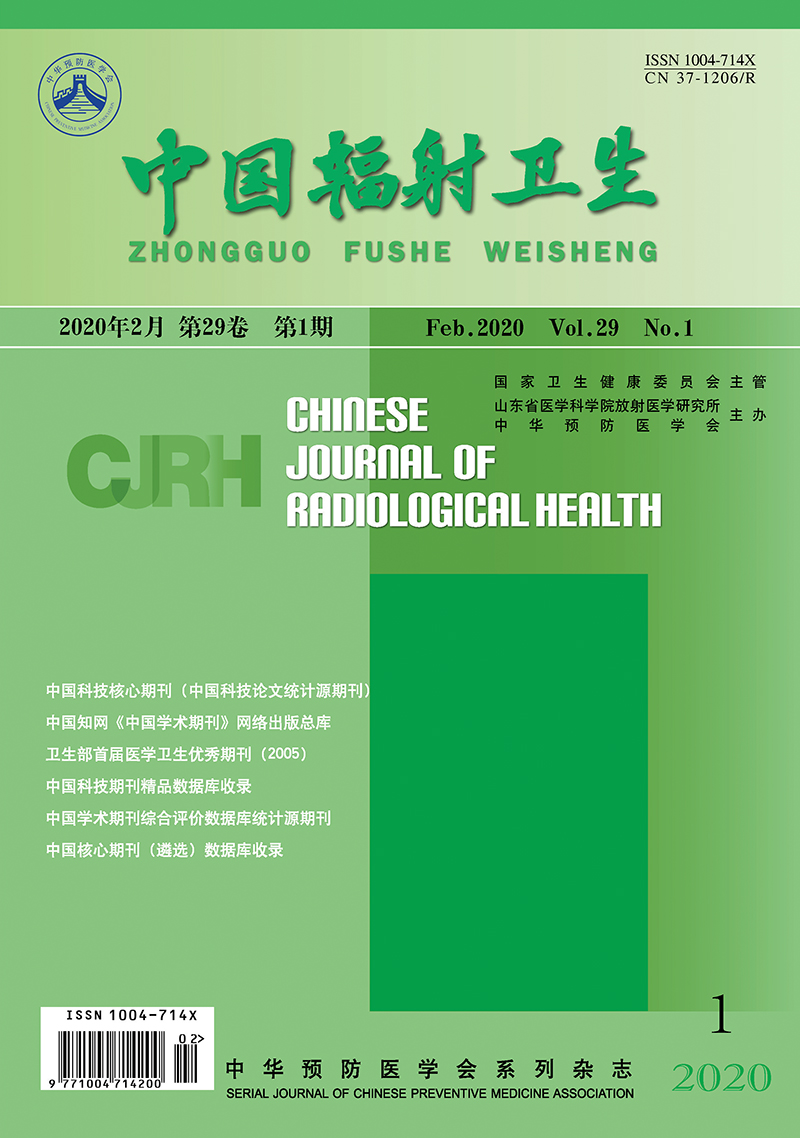NA Xiangjie, FU Lili, SHAN Tiemei, LI Yeming, SUN Sumei
Objective To investigate the effects of X-ray on chromosome and micronucleus of peripheral blood lymphocytes of interventional radiologists, and to ensure the health and safety of interventional radiologists.Methods 363 medical workers who were engaged in interventional radiology were selected as the study subjects and 435 health workers who were not exposed to radiation were selected as the control group.Results The total chromosome aberration rate (0.11% ±0.373%) in the interventional radiation group was significantly higher than that in the control group (0.02% ±0.126%), and the difference was statistically significant (t = 5.080, P < 0.01). Acentric fragment rate (0.04% ±0.199%) and bicentric fragment rate (0.06% ±0.234%) were also significantly higher than the control group (0.01% ±0.107%) and (0.00% ±0.068%), with statistically significant differences (t = 2.693,4.529 P < 0.01). The difference between the micronucleus rate (0.78‰ ±0.996‰) and the control group (0.65‰ ±0.853‰) was also statistically significant (t = 2.000, P < 0.05). There was no significant difference in chromosome aberration rate, acentric fragment rate and bicentric centromere rate between different working years (P > 0.05). The difference of micronucleus rate was statistically significant (P < 0.01). The difference of micronucleus rate between the group with working age ≥ 20a and other groups was statistically significant (P < 0.01). Intervention group and normal emission (diagnostic radiology, radiotherapy, industrial application) compared to the total chromosome aberration rate, double kinetochore rate differences were statistically significant (P < 0.01, P < 0.05), between two groups, intervention group (0.10 %±0.299%) total chromosome aberration rate is significantly higher than diagnostic radiology (0.06% ±0.312%) radiotherapy (0.03% ±0.170%) and industrial application group (0.04% ±0.189%), differences were statistically significant (P < 0.01), The rate of chromosome dicentriomere in the interventional group (0.06% ±0.234%) was significantly higher than that in the radiotherapy group (0.03% ±0.239%), the radiotherapy group (0.01% ±0.121%), and the industrial application group (0.02% ±0.135%), with statistically significant differences (P < 0.05). There was no significant difference in the rate of chromosome acentric fragment and micronucleus between the intervention group and each other.Conclusion X- ray can affect the rate of chromosome aberration and micronuclei. Long-term exposure to low doses of ionizing radiation can significantly increase the chromosome aberration rate and micronucleus rate of peripheral blood lymphocytes, which gradually increase with the increase of working age.

